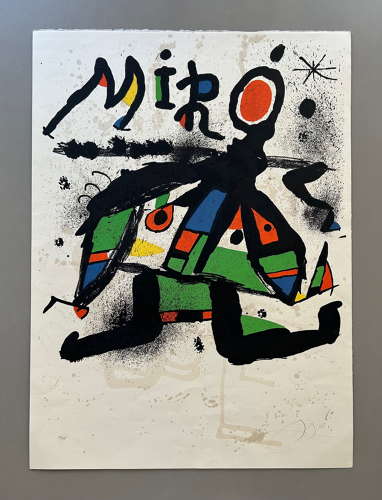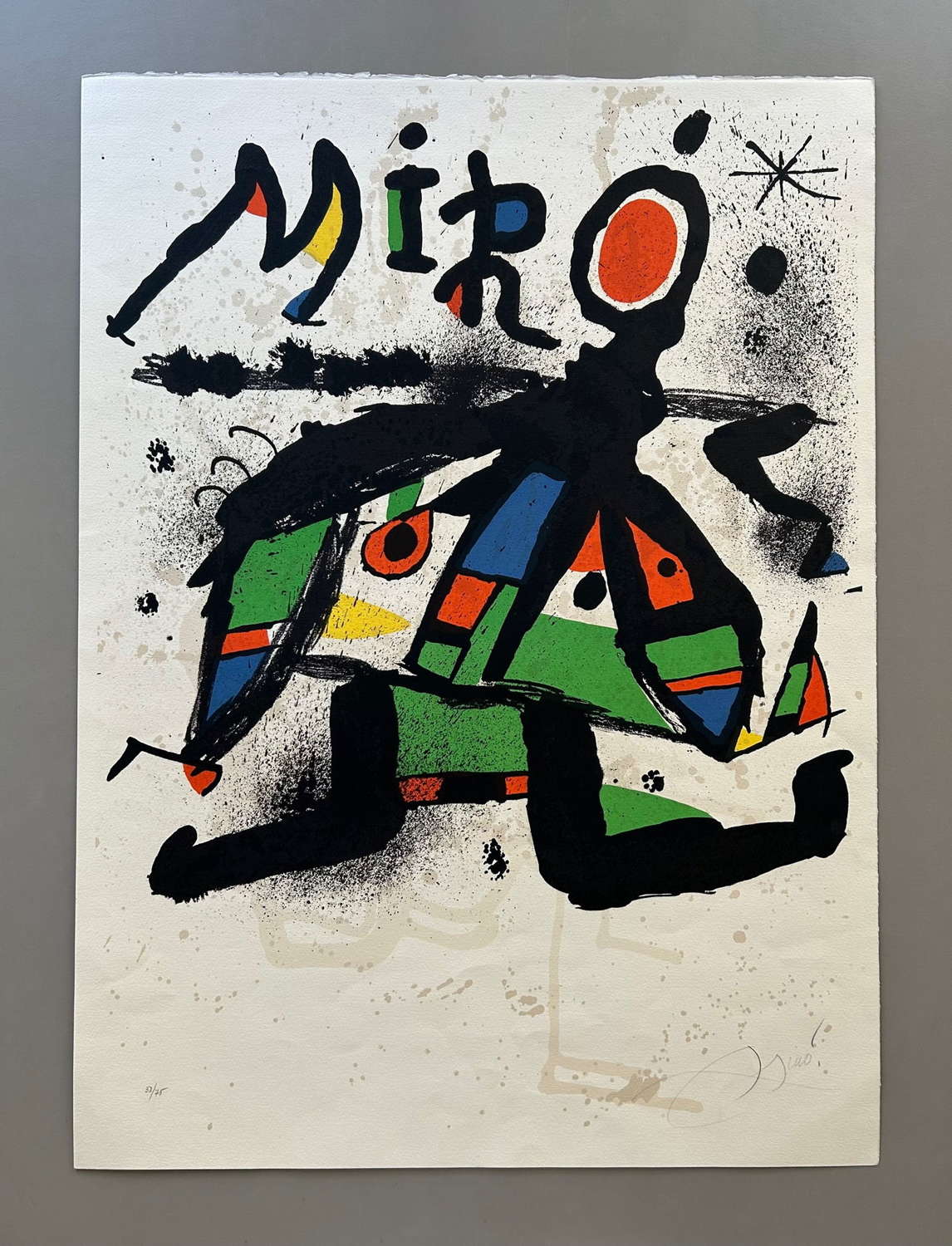
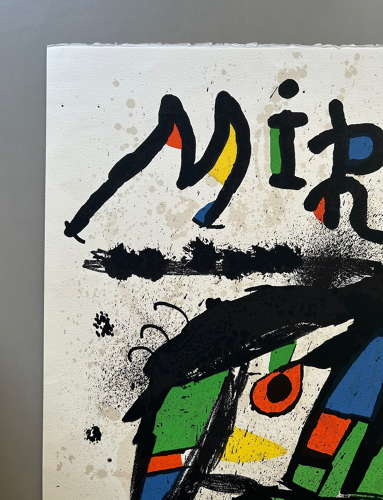
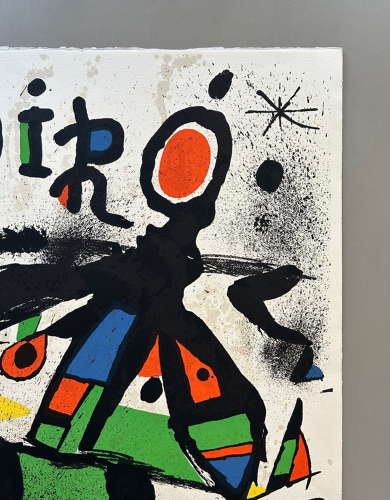
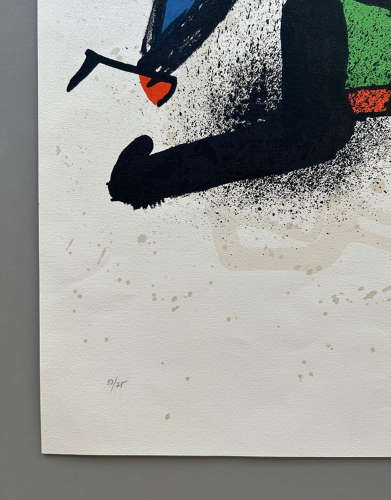
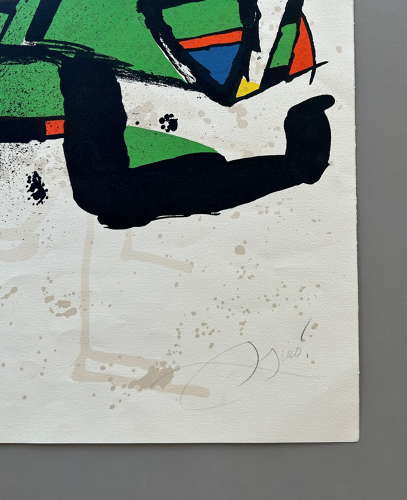
Joan Miro Signed Lithograph
Code: 12344
Dimensions:
Poster for Joan Miro Exhibition at Galerie Maeght
Lithograph printed in colours for an exhibition of Miro's work in Paris from November 1978 to January 1979 signed in pencil from an edition of 75.
This one numbered 37/75 on wove paper
Printed by Arte Adrien Maeght, Paris in 1978 and Published by Maeght Editeur, Paris
Full sheet printed to the edges with Dimensions: 78.1 x 57.2 cm
Condition: Very Good
Joan Miro I Ferra (20 April 1893 – 25Decemer 1983) known in the art world as Joan Miro was a Spanish painter, sculptor and ceramicist born in Barcelona into a family of a goldsmith and a watchmaker in the Barri Gotic neighbourhood. He studied at the Cerce Artistic de Sant Lluc and had his first solo show in 1918 at the Galeries Dalmau, where his work was ridiculed and defaced. Inspired by Fauve and Cubist exhibitions in Barcelona and abroad, Miro was drawn towards the arts community that was gathering in Montparnasse and moved to Paris in 1920, but continued to spend his Summers in his native Catalonia.
In Paris, under the influence of poets and writers, he developed his unique style: organic forms and flattened picture-planes drawn with a sharp line. Generally thought of as a Surrealist because of his interest in automatism and the use of sexual symbols, Miro’s style clearly shows in varying degrees the influence of Dada and Surrealism. But Miro himself rejected the idea of belonging to any specific art movement in his pronouncements in the inter-war period.
It has been established through the analysis of Miro’s personal writings that he had experienced multiple episodes of depression throughout his life. There appears to be a clear connection between his mental health and his paintings; he saw artistic creations as a way of dealing with his mental health issues.
After he gained international recognition, commentator have interpreted Miro’s work as Surrealism but imbued with a personal style, at times showing a veering towards Fauvism and Expressionism. Miro was known for his interest in the unconscious or subconscious mind, represented in his creation of child-like images. Although Miro’s artistic creations are hard to categorise, they often manifest his pride in his Catalan heritage.
From 1930 onwards, Miro often expressed his contempt for traditional painting methods and regarded them as a way to supporting bourgeois society. His oft-quoted interest in ‘assassination of painting’ has its origin in his dislike of bourgeois art, which he believed was used as a wat to promote propaganda and identity among the wealthy.
He had little time for art critics. Miro once expressed his dislike for art critics in the following words: ‘They are more concerned with being philosophers than anything else. They form a preconceived opinion, then they look at the work of art. Painting merely serves as a cloak to
wrap up their emaciated philosophical systems’.
Miro has been a significant influence on late 20-th century art, in particular on American Expressionist artists like Calder, Motherwell and Pollock and also recent painters like Hatton. His lyrical abstractions and colour painting inspired artists who embraced those styles such as Frankenthaler and Olitski.
His work also had an impact on modern designers like Rand and Day.
